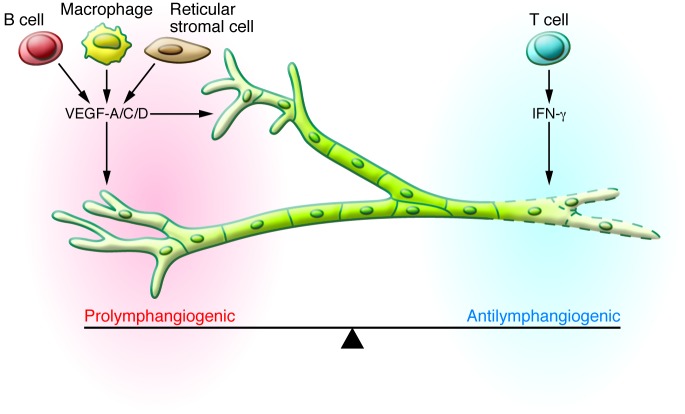Figure 2. In LNs, the balance between the prolymphangiogenic factors (VEGF-A, VEGF-C, VEGF-D) and antilymphangiogenic factors (IFN-γ) influences the actual response of lymphatic vessels to inflammatory stimuli; accordingly, lymphatic vessels either grow or regress.
During the acute stage of inflammation, the prolymphangiogenic factors usually dominate, in which case the final outcome is growth of the lymphatic vessels. As inflammation resolves, the antilymphangiogenic effect increases. Other regulators with either prolymphangiogenic or antilymphangiogenic effects have been reported; however, further studies are necessary before their role can be generalized. The coordination between stromal cells, immune cells, and interstitial flow seem to be other factors that affect the spatiotemporal regulation of IAL.

